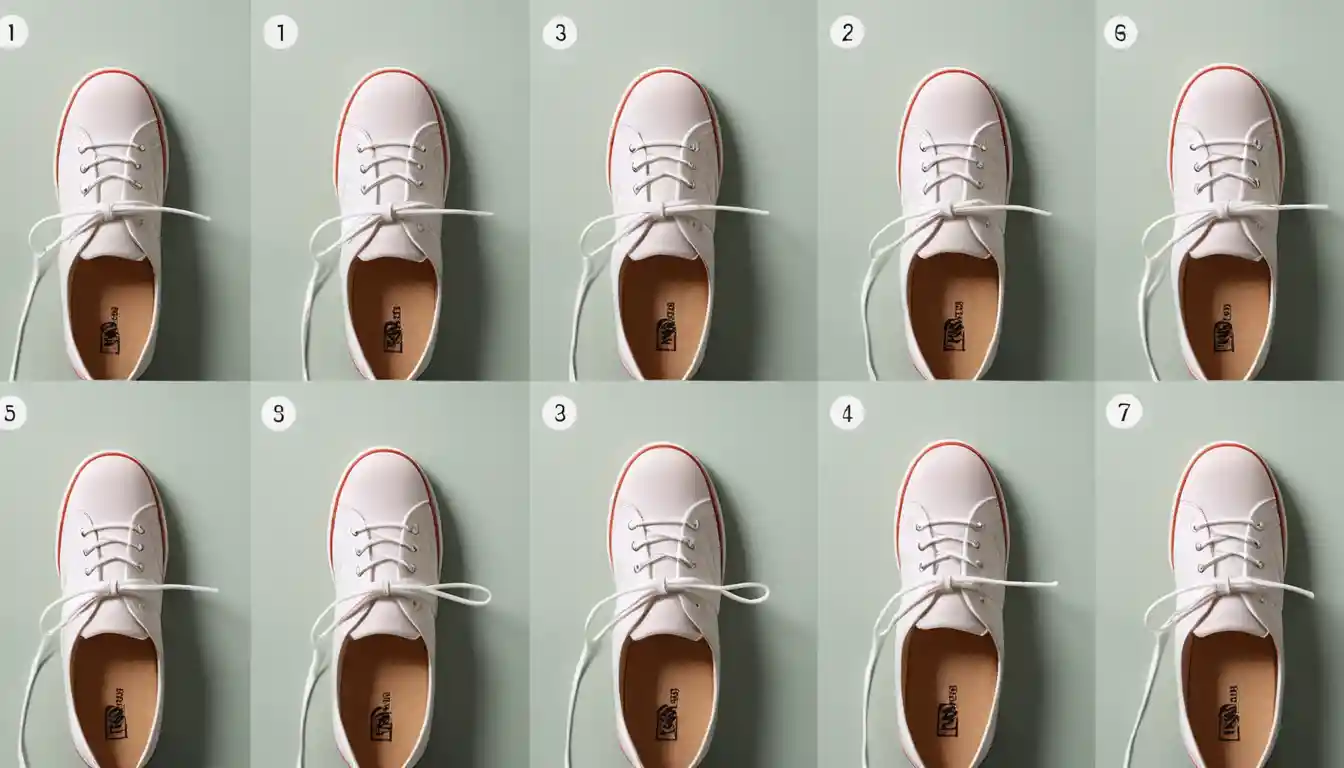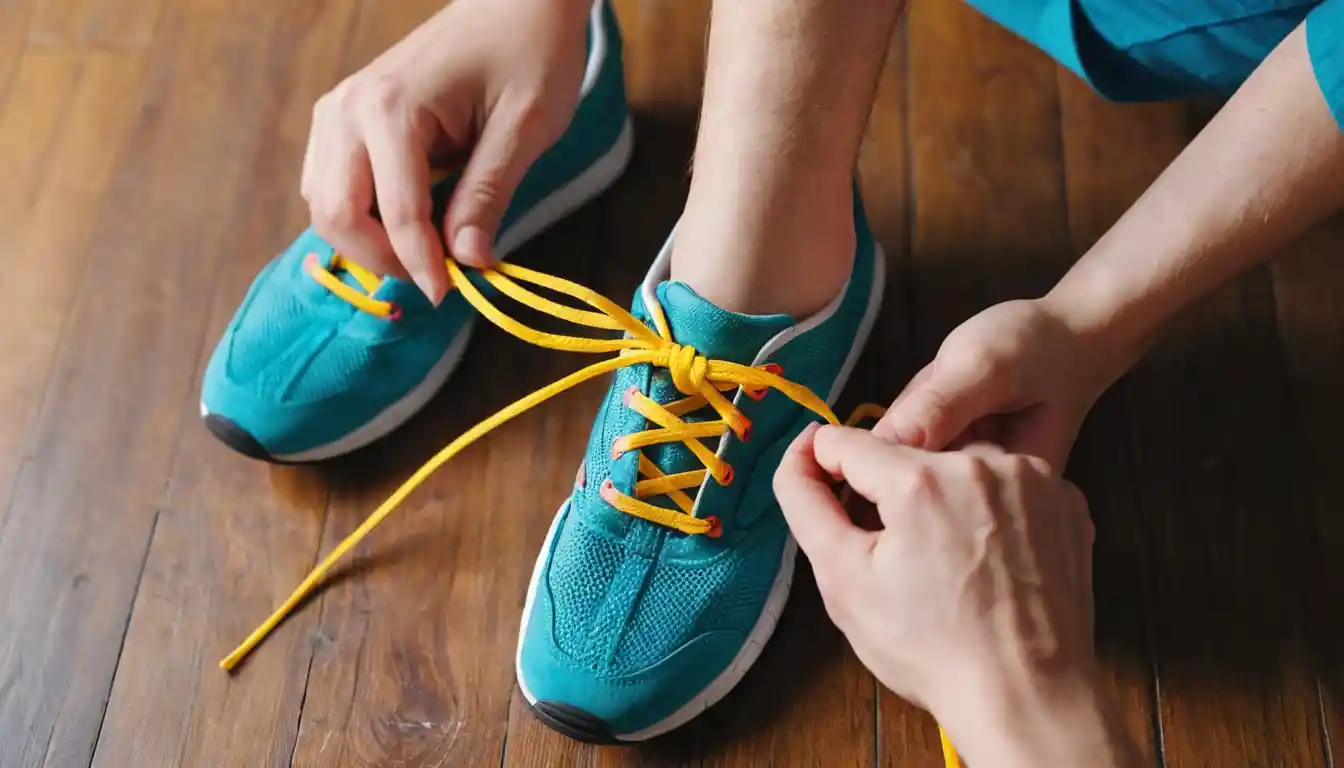Tying your shoes is one of those fundamental skills that we often take for granted until we need to teach it to someone else. Whether you’re a parent helping your child or an individual looking to refine your technique, learning how to tie a shoe can be both challenging and rewarding. In this article, we’ll explore the most effective methods, provide step-by-step guides, and offer tips to make the process enjoyable and engaging.
Introduction to Shoe Tying
Shoe tying is a skill that requires patience, practice, and persistence. It’s not just about securing your shoes; it’s also about developing fine motor skills and hand-eye coordination. For many, the journey to mastering this skill begins with the traditional method, but there are several techniques to suit different learning styles.
Why Learn to Tie Shoes?
Independence: Tying your shoes is a basic form of self-sufficiency that boosts confidence.
Safety: Properly tied shoes prevent tripping hazards and ensure a secure fit during physical activities.
Developmental Benefits: The process helps improve dexterity and cognitive skills.
Common Methods for Tying Shoes
There are several methods to learn how to tie a shoe, each with its own advantages:
1. Traditional Method (Loop, Swoop, and Pull)
This method is widely taught and involves creating a single loop with one lace, then wrapping the other lace around it to form a knot.
- Step-by-Step Guide:
- Cross the laces to form an “X.”
- Make a loop with one lace.
- Wrap the other lace around the loop.
- Pass the wrapped lace through the loop to create a knot.
- Pull tight to secure.
2. Two-Loop Method (Bunny Ears)
Popular among children, this method involves creating two loops that resemble bunny ears.

- Step-by-Step Guide:
- Cross the laces to form an “X.”
- Make a loop with each lace.
- Cross the loops over each other.
- Pass one loop through the other to secure.
- Pull tight to finish.
3. Better Bow Method
A variation of the traditional method, this involves wrapping the lace twice around the loop for added security.
- Step-by-Step Guide:
- Cross the laces to form an “X.”
- Make a loop with one lace.
- Wrap the other lace around the loop twice.
- Pass the wrapped lace through the loop.
- Pull tight to secure.
4. Double Bow Method
For extra security, this method involves creating a second bow after the initial knot.
- Step-by-Step Guide:
- Cross the laces to form an “X.”
- Make a loop with one lace.
- Wrap the other lace around the loop.
- Pass the wrapped lace through the loop.
- Create a second bow by crossing the loops and passing one under the other.
- Pull tight to secure.
Tips for Teaching Children
Teaching kids how to tie a shoe can be a fun and rewarding experience with the right approach:
Make It Engaging: Use visual aids and games to keep them interested.
Practice Regularly: Set aside dedicated time each day for practice.
Use Different Materials: Try using different types of laces or practice shoes to make it more engaging.
Overcoming Challenges
Some individuals may find tying shoes more difficult due to fine motor skill challenges or coordination issues. Here are some solutions:
Alternative Laces: Consider using elastic laces with sliding locks for easier fastening.
Adaptive Tools: There are specialized tools designed to assist with shoe tying for those with disabilities.
Frequently Asked Questions
What is the best method for teaching children how to tie shoes?
The “bunny ears” method is often recommended for children because it is simple and easy to understand. This method involves creating two loops that resemble bunny ears, which are then crossed over each other to form a knot.
At what age should children start learning to tie their shoes?
Children typically begin learning to tie their shoes around the age of five, as this is when they start developing the necessary fine motor skills. However, most kids master the skill between six and eight years old.

What are the most common methods for tying shoes?
The most common methods include the traditional method, the two-loop method (also known as the “bunny ears” method), and the one-loop method (often referred to as the “loop, swoop, and pull” method).
How can I make learning to tie shoes more engaging for children?
Using visual aids, games, and rhymes can make the process more engaging and fun for children. Additionally, practicing regularly and using different materials can help keep them interested.
What if my child is struggling to learn how to tie their shoes?
If your child is struggling, consider trying different methods or taking breaks to avoid frustration. It’s also helpful to use adaptive tools or alternative laces if needed.
Are there any tips for teaching adults or individuals with disabilities how to tie shoes?
For adults or individuals with disabilities, using specialized tools or alternative methods like elastic laces can be helpful. Patience and consistent practice are key.
How do I ensure my shoelaces are securely tied?
To ensure your shoelaces are securely tied, pull both loops tight after forming the knot. You can also create a double bow for added security.
What are some benefits of learning how to tie shoes?
Learning to tie shoes promotes independence, improves fine motor skills, and reduces tripping hazards. It’s also a developmental milestone that boosts confidence.
Can I use different types of laces to make tying easier?
Yes, using round laces instead of flat ones can make the process easier, especially for children. Additionally, elastic laces with sliding locks can be a good alternative for those who struggle with traditional laces.
How often should I practice tying shoes if I’m just starting out?
It’s recommended to practice tying shoes daily, even if it’s just for a few minutes. Consistency is key to mastering the skill.
Conclusion
Learning how to tie a shoe is a skill that requires patience and practice, but with persistence, anyone can master it. Whether you’re using the traditional method or exploring alternative techniques, the key is to stay consistent and make the process enjoyable. So, take the challenge today and start practicing! Remember, mastering this skill not only secures your shoes but also builds confidence and independence.







